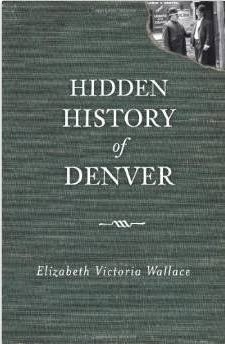
Christmas Cards - A “fad” that continues to this day.
The ancient Romans exchanged some kind of greeting or gift during the first week of January, so in essence they were New Year’s rather than Christmas gifts. Later, as Christianity took hold, the custom of giving gifts and cards became more popular, but they were still given during the first week of January. When the lithograph was invented during the late 18th century, cards were produced, but the manufacturers considered them a ‘fad’ that would pass in time. In 1843, the first Christmas card was produced in England and distributed before Christmas Day. It was designed by John Calcott Horsley and cost one shilling. During Victorian times, the cards became more stylish with layers of lace type paper, frosting and other embellishments. In 1875, Louis Prang, an American businessman began manufacturing Christmas cards from his firm in Roxbury, Massachusetts. The business was so successful that it is still in operating today as the American Greeting Card company.
Christmas Seals - A stamp with no momentary value.
In 1904, a Danish postmaster came up with the idea to produce a Christmas seal. The idea was so popular that it spread to other countries around the world. Christmas seals are now a prime source of revenue for many charitable organizations and generate millions of dollars for charities each year.
Caroling - The friars had a knack for it.
Friars from the Order of St. Francis of Assisi in Italy were perhaps the first people to compose songs of praise and happiness especially for the Christmas period. The concept spread to other parts of the world and soon the custom of singing carols, especially on Christmas Eve or early morning on Christmas Day, was commonplace.
Angels at Christmastime -Winged messengers.
The word angel originated from the Greek Angelos which means “messenger” or “herald.” They have been depicted in paintings by the masters for centuries and of course the bible too where various accounts of angels are mentioned. Often, a halo or nimbus appears behind their heads indicating their holiness or purity – sometimes they hold a harp or other musical instrument which perhaps signifies their desire to sing the praises of God.
First footing - A Scottish tradition.
The ancient Romans exchanged some kind of greeting or gift during the first week of January, so in essence they were New Year’s rather than Christmas gifts. Later, as Christianity took hold, the custom of giving gifts and cards became more popular, but they were still given during the first week of January. When the lithograph was invented during the late 18th century, cards were produced, but the manufacturers considered them a ‘fad’ that would pass in time. In 1843, the first Christmas card was produced in England and distributed before Christmas Day. It was designed by John Calcott Horsley and cost one shilling. During Victorian times, the cards became more stylish with layers of lace type paper, frosting and other embellishments. In 1875, Louis Prang, an American businessman began manufacturing Christmas cards from his firm in Roxbury, Massachusetts. The business was so successful that it is still in operating today as the American Greeting Card company.
Christmas Seals - A stamp with no momentary value.
In 1904, a Danish postmaster came up with the idea to produce a Christmas seal. The idea was so popular that it spread to other countries around the world. Christmas seals are now a prime source of revenue for many charitable organizations and generate millions of dollars for charities each year.
Caroling - The friars had a knack for it.
Friars from the Order of St. Francis of Assisi in Italy were perhaps the first people to compose songs of praise and happiness especially for the Christmas period. The concept spread to other parts of the world and soon the custom of singing carols, especially on Christmas Eve or early morning on Christmas Day, was commonplace.
Angels at Christmastime -Winged messengers.
The word angel originated from the Greek Angelos which means “messenger” or “herald.” They have been depicted in paintings by the masters for centuries and of course the bible too where various accounts of angels are mentioned. Often, a halo or nimbus appears behind their heads indicating their holiness or purity – sometimes they hold a harp or other musical instrument which perhaps signifies their desire to sing the praises of God.
First footing - A Scottish tradition.
The Scots have an interesting tradition on the last day of the year. The custom calls for a tall, dark-haired man to cross the threshold of a home immediately after midnight on the last day of the year. He brings with him, a loaf of bread, a piece of coal and a silver coin, all of which symbolizes food, warmth and prosperity for the coming year. He enters through the front door in silence, shakes the hands of the men in the household and kisses the women. After this, he gives everyone in the home his best wishes for the coming year and then, most importantly, he leaves the house through the back door. Following is a first footing rhyme:
I wish you a happy New Year
A pocketful of money, a cellar full of beer,
A good fat pig to last all year
So please give a gift for New Year.
I wish you a happy New Year
A pocketful of money, a cellar full of beer,
A good fat pig to last all year
So please give a gift for New Year.





















